Дэниел Ергин - В поисках энергии. Ресурсные войны, новые технологии и будущее энергетики
- Название:В поисках энергии. Ресурсные войны, новые технологии и будущее энергетики
- Автор:
- Жанр:
- Издательство:Array Литагент «Альпина»
- Год:2013
- Город:Москва
- ISBN:978-5-9614-3343-2
- Рейтинг:
- Избранное:Добавить в избранное
-
Отзывы:
-
Ваша оценка:
Дэниел Ергин - В поисках энергии. Ресурсные войны, новые технологии и будущее энергетики краткое содержание
В поисках энергии. Ресурсные войны, новые технологии и будущее энергетики - читать онлайн бесплатно ознакомительный отрывок
Интервал:
Закладка:
32. 32. Face the Nation , Transcript, January 8, 2012 (Dempsey); English.news.cn, January 19, 2012 (Premier Wen): Ali Naimi in Financial Times , March 28, 2012.
Глава 15. Газ по морю
1. Thomas D. Cabot, Beggar on Horseback: The Autobiography of Thomas D. Cabot (Boston: David R. Godine, 1979), pp. 46 (“opinion”), p. 75 (“dreamt”); Cabot II, p. 118 (“expropriated”).
2. Cabot II, p. 131 (extreme refrigeration); Malcolm Peebles , Evolution of the Gas Industry (New York: New York University Press, 1980) p. 187 (“intrigued”); Bureau of Mines study (investigation).
3. Hugh Barty-King, New Flame: How Gas Changed the Commercial, Domestic, and Industrial Life of Britain between 1813 and 1984 (Tavistock: Graphmitre, 1984), pp. 237–42 (“high speed gas”); Stephen Howarth, Joost Jonker, Keetie Sluyterman and Jan Luiten van Zanden, The History of Royal Dutch Shell: Powering the Hydrocarbon Revolution 1939–1973, vol. 2 (New York: Oxford University Press, 2007), p. x.
4. Fred von der Mehden and Steven W. Lewis, “Liquefied Natural Gas from Indonesia: The Arun Project,” in Natural Gas and Geopolitics: From 1970 to 2040, eds. David G. Victor, Amy M. Jaffe, and Mark H. Hayes (Cambridge University Press, 2006), p. 101 (Cook Inlet).
5. Roosevelt to Ickes, August 12, 1942, OF4435, Franklin D. Roosevelt papers (“lying idle”).
6. Robert Stobaugh and Daniel Yergin, eds., Energy Future: Report of the Energy Project at the Harvard Business School (New York: Vintage, 1983), p. 70.
7. Cabot II, p. 134 ($ 5 million).
8. Interview with Gordon Shearer.
9. Fred von der Mehden and Steven W. Lewis, “Liquefied Natural Gas from Indonesia: The Arun Project,” 2006; interview (“crown jewels”).
10. Interviews (“able to do much”).
11. Kohei Hashimoto, Jareer Elass, and Stacy Eller, “Liquefied Natural Gas from Qatar: The Qatargas Project,” prepared for the Geopolitics of Natural Gas Study, a joint project of the Program on Energy and Sustainable Development at Stanford University and the James A. Baker III Institute for Public Policy of Rice University, December 2004, p. 10.
12. Interview with Lucio Noto.
13. Interview with Abdullahbin Hamad al-Attiyeh.
14. Blake Roberts and Marcela Rosas, “Ripple Effect: Increased LNG Demand in Japan and the United Kingdom to Reduce LNG Flow to North America,” CERA, July 20, 2007; Institute for Energy Economics Japan, “Impacts on International Energy Markets of Unplanned Shutdown of Kashiwazaki-Kariwa Nuclear Power Station,” April 2008.
Глава 16. Газовая революция
1. Dan Steward, The Barnett Shale Play: Phoenix of the Fort Worth Basin -A History (Fort Worth: Fort Worth Geological Society, 2007), p. 32 (geological research).
2. Houston Chronicle, November 14, 2009 (“what we’re going to do”).
3. Steward, The Barnett Shale Play, p. 122–23, 141–42 (shut down, good deal of money); interview with Dan Steward.
4. Steward, The Barnett Shale Play, p. 142 (“light sand fraccing”); interview with Dan Steward; interview with Lawrence Nichols.
5. Teddy Muhlfelder, “The Shale Gale,” IHS CERA, 2009; 6. IHS CERA, Fueling North America’s Energy Future: The Unconventional Natural Gas Revolution and the Carbon Agenda, March2010; MIT Energy Initiative, The Future of Natural Gas: An Interdisciplinary MIT Study (Cambridge: Massachusetts Institute of Technology, 2011).
6. Secretary of Energy Advisory Board (“The Deutch Committee”), Shale Gas Subcommittee 90 Day Report , August 18, 2011, pp. 1, 5.
7. Leta Smith, “Shale Gas Outside of North America: High Potential but Difficult to Reach,” IHS CERA, April 2009 (recoverable shale gas).
8. John C. Harris, “Australian LNG: First Come, First Served,” IHS CERA, January 28, 2011.
9. Time, February 16, 1970; Willy Brandt, My Life in Politics (New York: Viking, 1992); Angela Stent, From Embargo to Ostpolitik: The Political Economy of West German-Soviet Relations 1955–1980 (Cambridge: Cambridge University Press, 2002), p. 173 (“Economics”).
10. Angela E. Stent, Soviet Energy and Western Europe (New York: Praeger, 1982), p. 81.
11. New York Times, September 5, 1982 (“wounded by a friend”); August 3, 1982 (ignore the embargo).
12. Bloomberg, June 27, 2008.
13. IHS CERA, Securing the Future: Making Russian-European Gas Interdependence Work (2007), ch. 1.
14. Thone Gustafson and Matt Sagers, “Gas Transit Through Ukraine: The Struggle for the Crown Jewels,” CERA, 2003.
15. Christine Telyan and Thane Gustafson, “Russia and Ukraine’s New Gas Agreement: What Does It Mean and How Long Will It Last,” IHS CERA, 2006; Robert L. Larsson, Russia’s Energy Policy: Security Dimensions and Russia’s Reliability as an Energy Supplier (Stockholm: Swedish Defense Research Agency, 2006) (shockwaves); New York Times, January 5, 2006 (“dependence on Russia”).
16. Katherine Hardin, Sergej Mahnovski, and Leila Benali, “Filling a Southern Gas Pipeline to Europe: Export Potential and Costs for Gas Sources Compared,” IHS CERA, 2010 (Kurdistan).
17. Peter Jackson, “Evolution of the Structure of the European Gas Market,” IHS CERA, March2011; Peter Jackson, et al., “The Unconventional Frontier: Prospects for Unconventional Gas in Europe,” IHS CERA, February 2011.
Глава 17. Переменный ток
1. Jone-Lin Wang, “Why Are We Using More Electricity?” The Wall Street Journal, March 10, 2010.
2. Jill Jonnes, Empires of Light: Edison, Tesla, Westinghouse, and the Race to Electrify the World (New York: Random House, 2004), p. 84.
3. Thomas Hughes, Networks of Power: Electrification in Western Society 1880–1930 (Baltimore: Johns Hopkins University Press, 1993), p. 42 (“dynamos”); IEEE Global History Network, “Pearl Street Station,” at http://www.ieeeghn.org/wiki/index.php/Pearl_Street_Station(electricity bill).
4. Matthew Josephson, Edison: A Biography (New York: Wiley, 1992), pp. 133–34 (“most useful citizen”) p. 434; Robert Conot, Thomas Edison: A Stroke of Luck (New York: Bantam, 1980), p. 132 (“could not explain”); Jannes, Empires of Light (“minor invention”).
5. Paul Israel, Edison: A Life of Invention (New York: John Wiley & Sons, 1998), p. 166 (“subdivided”); Jonnes, Empires of Light, p. 59 (“scientific men”); Hughes, Networks of Power, pp. 19–21 (“Edison’s genius”).
6. Hughes Networks of Power, p. 22; Israel, Edison, p. 167 (“enabled him to succeed”).
7. Robert Friedel, Paul Israel and Bernard Finn, Edison’s Electric Light: The Art of Invention (Baltimore: Johns Hopkins University Press, 2010), p. 30–31 (“expensive experimenting”); Jonnes, Empires of Light, p. 76 (“Capital is timid”), pp. 3–11 (“experimental station”).
8. Randall Stross, The Wizard of Menlo Park: How Thomas Edison Invented the Modern World (New York: Three Rivers Press, 2007), p. 126; Jonnes, Empires of Light, pp. 195–97 (“Westinghoused”).
9. There were 27. 5 million recorded visitors to the Chicago World’s Fair in 1893, at a time when the total population of the United States was 65 million; Erik Larson, The Devil in the White City: Murder, Magic, and Madness at the Fair That Changed America (New York: Vintage Books, 2004), pp. 4–5; J. P. Barrett, Electricity at the Columbian Exposition (Chicago: R. R. Donnelley & Sons Company, 1894), pp. xi, 16–18; David Nye: Electrifying America: Social Meanings of a New Technology (Cambridge: Massachusetts Institute of Technology Press, 1992), p. 38.
10. John F. Wasik, The Merchant of Power: Sam Insull, Thomas Edison, and the Creation of the Modern Metropolis (New York: Palgrave Macmillan, 2006), pp. 7, 10–11; Forrest McDonald, Insull: The Rise and Fall of a Billionaire Utility Tycoon (Washington, DC: BeardBooks, 2004), pp. 15–20.
11. Hughes, Networks of Power, p. 220 (“had to go to Europe”).
12. Richard F. Hirsh, Technology and Transformation in the American Electric Utility Industry (Cambridge: Cambridge University Press, 1989), p. 19 (“begin to realize”).
13. Alfred E. Kahn, The Economics of Regulation: Principles and Institutions, vol. 2. (Cambridge: Massachusetts Institute of Technology Press, 1998), p. 117; Hughes, Networks of Power, p. 206.
14. Alfred E. Kahn, The Economics of Regulation: Principles and Institutions, vol. 1 (Cambridge: Massachusetts Institute of Technology Press, 1998), pp. 11–12, 43 (“fair interpretation”); Samuel Insull, The Memoirs of Samuel Insull: An Autobiography, ed. Larry Plachno (Polo, Illinois: Transportation Trails, 1992), pp. 89–90.
15. Hughes, Networks of Power, p. 182 (“most important city,” “toasted bread”), p. 227 (“remaining last”).
16. Hirsh, Technology and Transformation in the American Electric Utility Industry, p. 17; Jonnes, Empires of Light, p. 368; New York Times, July 17, 1938 (“cheapest way”).
17. Time, May 14, 1934 (“presiding angel”); McDonald, Insull, p. 238 (“my name”).
18. McDonald, Insull, p. 282.
19. U. S. Energy Information Agency, “Public Utility Holding Company Act of 1935: 1935–1992.” January 1993, p. 6; Time, May 14, 1934 (“I have erred”).
20. Frederick Lewis Allen, Since Yesterday: The 1930’s in America (New York: Harper & Row Publishers, 1986), p. 75 (“I wish my time”); New York Times, June 12, 1932 (“foresight”); McDonald, Insull, p. 277 (“too broke”).
21. Wasik, The Merchant of Power, p. 236; Time, May 14, 1934; McDonald, Insull, p. 314 (“to get” the Insulls); New York Times, July 17, 1938.
22. Arthur Schlesinger, Jr., The Age of Roosevelt, vol. 3, The Politics of Upheaval (Boston: Houghton Mifflin, 1960), p. 304 (FTC).
23. Hughes, Networks of Power, p. 204 (“difficult concepts”); Schlesinger, The Age of Roosevelt, vol. 3, The Politics of Upheaval, pp. 303–12 (“private socialism”); Kennth S. Davis, FDR: The New Deal Years 1933–1937 (New York: Random House, 1986), pp. 529–37.
24. Robert Caro, The Path to Power (New York: Vintage Books, 1990), pp. 379, 504.
25. Kenneth T. Jackson, Crabgrass Frontier: The Suburbanization of the United States (New York: Oxford University Press, 1987), pp. 231–33; Michael J. Bennett, When Dreams Came True: The G. I. Bill and the Making of Modern America (Washington, DC: Brassay’s, 2000), p. 287.
26. Ronald Reagan, Reagan: A Life in Letters, eds. Kiron Skinner, Annelise Anderson and Martin Anderson (New York: Free Press, 2003), p. 143 (“won’t fly”).
27. Ronald Reagan with Richard G. Hubler, Where’s the Rest of Me? (New York: Duell, Sloan and Pearce, 1965), p. 273 (“most electric house”); Lou Cannon, Governor Reagan: His Rise to Power (New York: Public Affairs, 2003), p. 111 (“more refrigerators”), ch. 6; Nancy Reagan with William Novak, My Turn: The Memoirs of Nancy Reagan (New York: Random House, 1989), p. 128 (Hoover Dam).
Читать дальшеИнтервал:
Закладка:
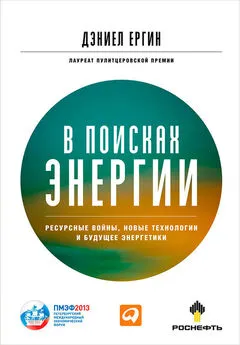

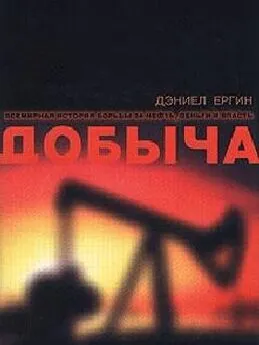
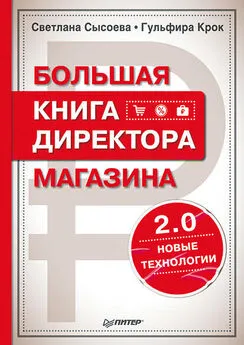
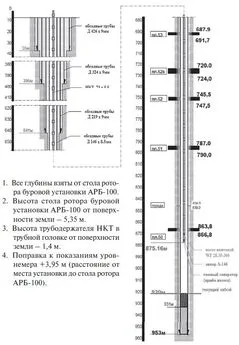
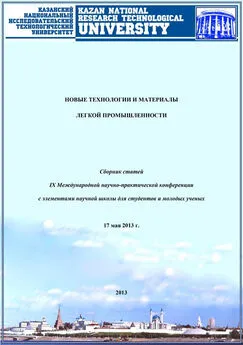


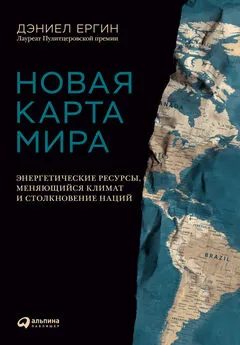
![Андрей Степанов - В поисках энергии [фрагмент]](/books/1060562/andrej-stepanov-v-poiskah-energii-fragment.webp)
